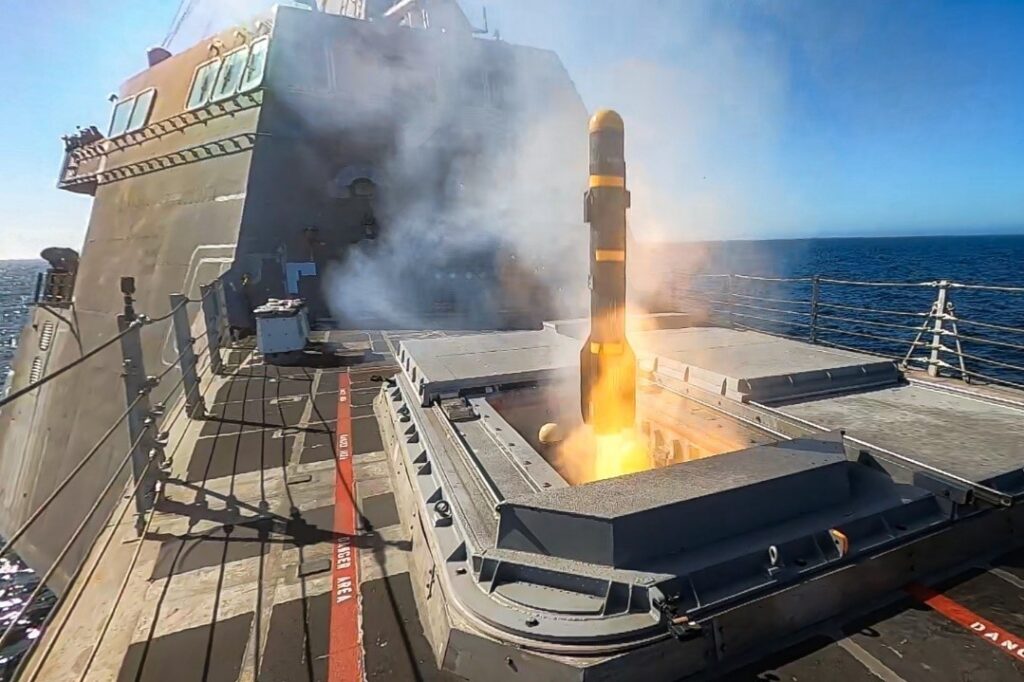
PACIFIC OCEAN — The U.S. Navy’s littoral combat ship class successfully launched sea-based missiles at a land-based target for the first time during a proof-of-concept exercise on May 12, said Lt.j.g. Sam Hardgrove in a May 16 release.
Independence-variant littoral combat ship USS Montgomery (LCS 8) fired three AGM-114L Longbow Hellfire missiles to strike a land-based target several nautical miles away as part of the LCS surface-to-surface mission module, or SSMM.
“This test proved the critical next step in increasing lethality of the littoral combat ship,” said Cmdr. Dustin Lonero, Montgomery’s commanding officer. “Using our speed and shallow draft, we are now uniquely optimized to bring this level of firepower extremely close to shore in support of our warfighters and operators on the beach.”
The Longbow Hellfire missile already plays a key role in the up-gunned surface warfare mission package. Originally fielded by both variants of the littoral combat ship in 2019, the missile has repeatedly demonstrated the capability quickly defeat multiple swarming fast attack craft or fast inshore attack craft. Each LCS is capable carrying 24 missiles.
“The SSMM is a fundamental cornerstone of LCS lethality and evolving capability to provide enhanced fire support in the littorals and over the horizon in support of the Navy and Marine Corps fighting force,” said Lt. Michael Jones, a warfare-tactics instructors from Surface and Mine Warfare Development Center. “The new ability for LCS to conduct maritime strikes bolsters the ship’s role in conducting shaping operations within amphibious and expeditionary warfare areas.”
The Longbow Hellfire missile was commissioned in 1998 and has proven successful over its years of service across all U.S. military branches. Originally designed as an anti-tank weapon for the U.S. Army, its all-weather millimeter-wave sensing, semi-active laser guidance continues to prove extremely effective in the maritime domain against all manner of threats.
“If you take a proven program of record and adapt its capability for the maritime warfare environment, you have a win for the taxpayer, improved interoperability between various services, and an increased lethality and competitive edge at sea,” said Chief Gunner’s Mate David Wynne, Montgomery’s weapons chief petty officer.
Combining emerging technologies, an MQ-8C Fire Scout unmanned helicopter, from Helicopter Sea Combat Squadron (HSC) 23, remained airborne providing advanced targeting and bomb hit assessment capability. The Fire Scout already provides littoral combat ships an over-the-horizon intelligence, surveillance, reconnaissance and targeting capability.



